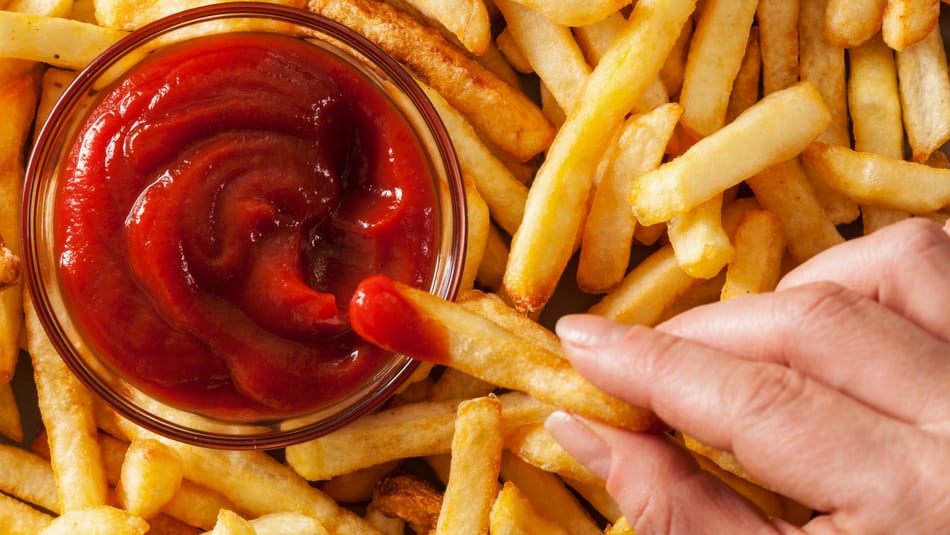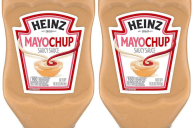It's summer and that means hamburgers and hotdogs on the grill, along with all the fixings on the table. If you don't have ketchup, it's not a cookout. Not to mention all the other foods that ketchup goes with: French fries, meatloaf, fried fish, onion rings, and yes, even eggs. It's a rare refrigerator that doesn't have a bottle of the red stuff stuck in the door. But how did ketchup become so important in the American home?
Videos by Wide Open Country
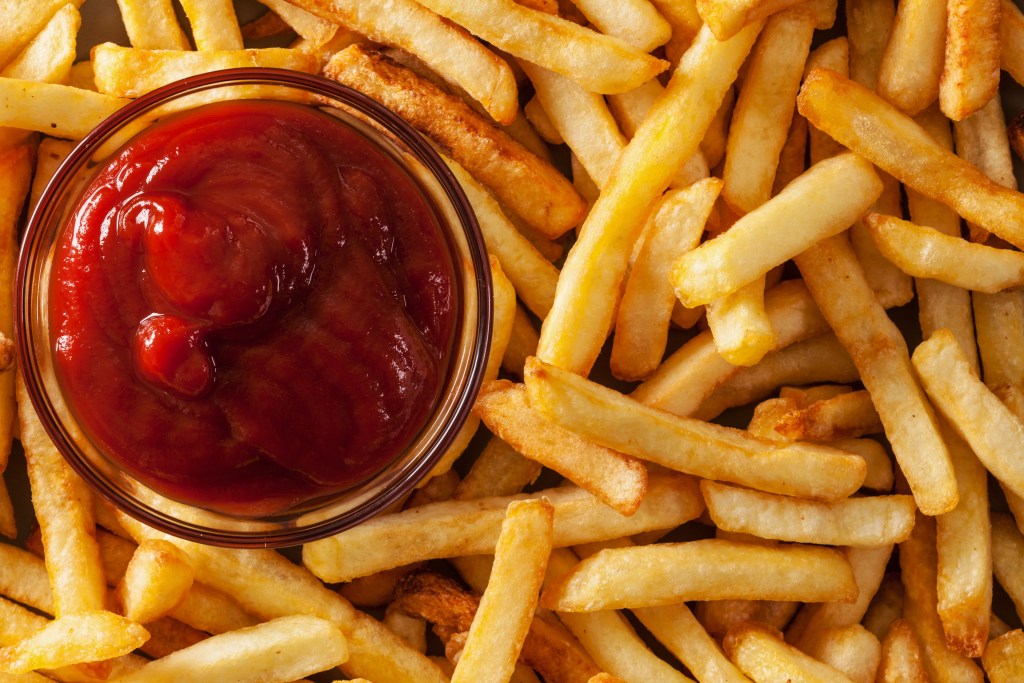
Ketchup is a perfect mixture of tangy and sweet. You can mix it with other condiments for an extra kick (try combining ketchup with mayonnaise, Worcestershire sauce, and lemon for Marie Rose sauce, something the Brits started long before Heinz introduced Mayochup).
For modern Americans, ketchup equals tomatoes. But ketchup started off as a fermented fish paste. In a look at the origins of ketchup, NPR found that it was a kind of fish sauce:
"The story of ketchup is in many ways a story of globalization and international trade. On his blog The Language of Food, Stanford University professor Dan Jurafsky comprehensively traces the tangy condiment's long journey from Southeast Asia to China, then to Europe and, eventually, the United States. Depending on how it is translated, ketchup's predecessor was known as ke-tchup, kôechiap or kê-tsiap in Hokkien Chinese. It referred to a pickled fish brine or sauce from the Fujian province of China and Southeast Asia... Later, vegetables like beans would also be fermented and made into pastes, and Hokkien Chinese traders would bring these sauces to Malaysia and Indonesia, where they were known by the names kechap and ketjap respectively."
In other words, like so many other things we consider American, ketchup came to us via a long journey from another part of the world. National Geographic traced ketchup back and found that the British probably first tried ketchup in Southeast Asia in the late 17th and early 18th centuries and brought it back to the Western world. They found a recipe published in 1732 for "Ketchup in Paste" that listed the East-Indies (or Southeast Asia) as its origin, while NPR says that "the word 'catchup' first appeared in print in 1699 in the New Dictionary of the Terms Ancient and Modern of the Canting Crew and was described as 'a high East-India Sauce.'"
Early English ketchups were made from mushrooms, walnuts, lemons, oysters, anchovies, elderberries, and beer. Basically, it was a spiced sauce. It gained popularity in part because it was preserved through fermentation, so it would keep for several months. Ketchup made its way across the Atlantic to the United States, which is where it became the tomato ketchup we know and love today.
James Mease, a scientist and horticulturalist living in Philadelphia, published the first known tomato ketchup recipe in 1812. There are two reasons tomatoes weren't used for ketchup until it reached American shores. First, the tomato, or "love apple" as it was commonly called then, is native to North America. Second, even though tomatoes were brought back to England in the 1500s, Europeans thought tomatoes, as a member of the nightshade family, were poisonous.
Mease's recipe consisted of tomato pulp, spices, and brandy, which is not quite what we think of as ketchup today. There were many versions of tomato ketchup recipes, but it wasn't until after the Civil War that ketchup became a widespread commercial product. The first commercially produced ketchup included high levels of preservatives like sodium benzoate and additives like coal tar, which gave the sauce a brighter red color.
https://www.instagram.com/p/BVnKE7kl3Fe/?taken-by=heinz
Figuring that benzoate and coal tar weren't really quality ketchup ingredients, a gentleman from Pittsburgh started making ketchup with vinegar and red ripe tomatoes instead. Henry J. Heinz started producing preservative-free ketchup in 1876, patented a unique ketchup bottle in 1882, and by 1905 had sold five million bottles of ketchup of Heinz ketchup.
Today, you can find ketchup in 97 percent of American households and in every fast food restaurant, with most of it being either Heinz Tomato Ketchup or Hunt's Ketchup. The rivalry between the two is a little like choosing between Coke and Pepsi — everyone has their favorite ketchup and they know it's the best ketchup, no matter what.
But ketchup isn't done with its evolution. Instead of using sugar, some ketchup makers started using high fructose corn syrup, which is still used today, though more producers have a "natural" line without it.
Other companies are making artisan ketchup out of fruit. Washington, DC-based 'Chups is making ketchup out of cherries, blueberries, and even spicy pineapple. And if you think that cranberries belong in all seasons, not just the end of November, their cranberry ketchup is a revelation in toppings.
Tomato ketchup is also easy to make at home since it's basically tomato concentrate with some kind of sugar, vinegar, and spices like garlic, clove, ground black pepper, and onion powder. Sure, it's super easy to buy at the store, but if you're looking to experiment with a DIY project this summer, why not grab a bunch of perfect summer tomatoes (or some cans of tomatoes) and try your hand at making ketchup? Here are a few ketchup recipes to get you started, including one non-tomato ketchup.
Bohemian Ketchup
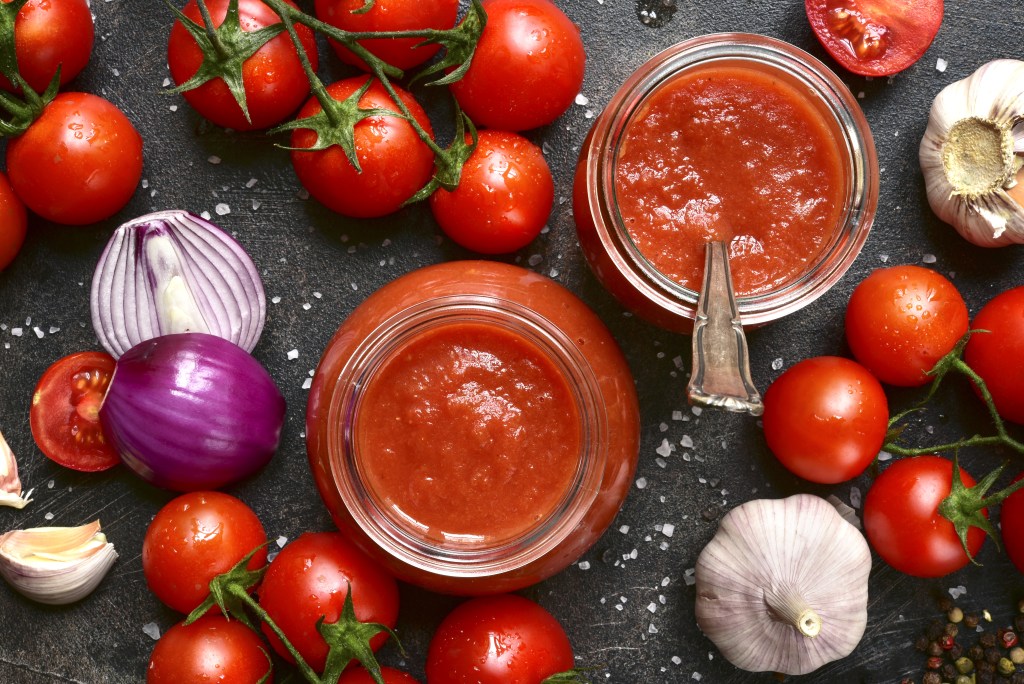
This "lost" family recipe uses fresh tomatoes and a mix of spices. If you won't use the whole batch right away, this recipe is good for canning.
Get the recipe here.
Homemade Ketchup Recipe
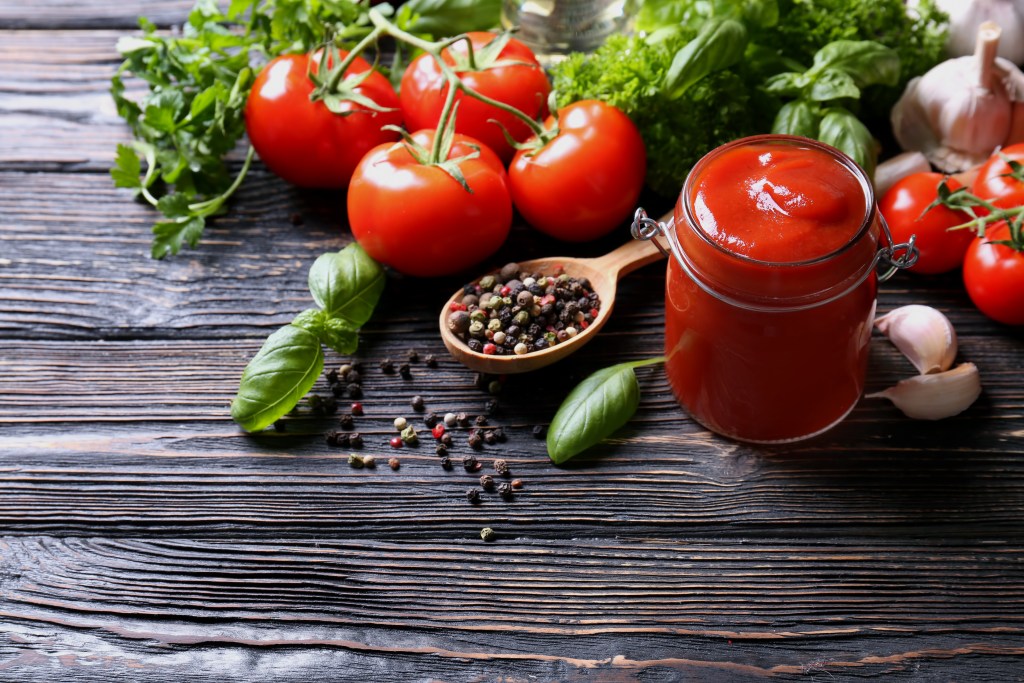
This recipe uses canned tomato paste, which gives it a year-round project potential. It also uses brown sugar for a darker, molasses taste.
Get the recipe here.
Sweet Cherry Ketchup
Food in Jars recommends using cherry ketchup on roasted sweet potatoes, which is an amazing taste combo. Try this recipe when you find tons of good cherries at your local market.
Get the recipe here.
Watch:
